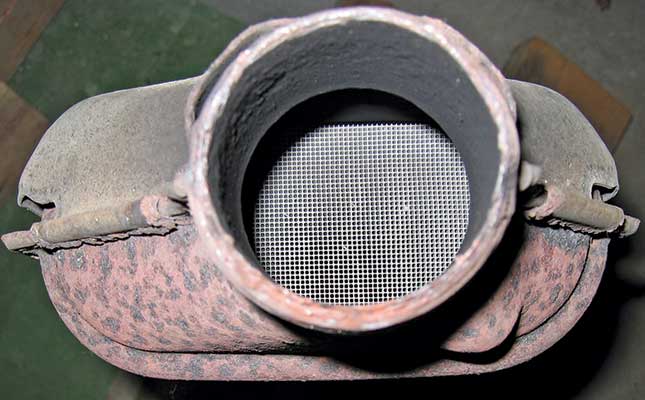
Photo: Redburn
Automotive emission regulation first appeared in California in the US with the creation of the California Air Resources Board in 1967 and the US Environmental Protection Agency (EPA) in 1970. These and similar organisations in Europe and Japan have played a role in developing legislation that forced the automotive industry to clean up the pollutants from burning hydrocarbon fuels.
Modern engine control systems are the direct result of these efforts and several pollutants are no longer present in significant quantities in a car’s exhaust gas.
The first effort at controlling pollution was to add a positive crankcase ventilation system to the intake manifold. This draws blowby gases (unburned hydrocarbons) from the crankcase into the intake manifold, giving them a second chance to burn instead of being emitted into the atmosphere.
The next step was to detune the engines by running them lean and retarding ignition timing. However, this lowered performance and increased fuel consumption.
Unleaded fuel was introduced in the US in 1975 and later elsewhere. Soon afterwards, the first catalytic converters appeared, the biggest step towards significantly reducing automotive pollution. (‘Cats’ require unleaded fuel.)
The first converter restricted exhaust gas flow and reduced power output, but it quickly evolved into the modern three-stage converter that reduces pollution to a very low level without significantly affecting power output.
Carbon dioxide
As its name indicates, hydrocarbon fuel contains hydrogen and carbon. When combined with (burned in) clean air in the proportion 14,7:1 air to fuel by weight and ignited, it produces only water and carbon dioxide plus the (unchanged) nitrogen in the air.
Every litre of fuel burnt produces about a litre of water, which is why water runs out of a car’s exhaust on a cold day. Once the exhaust pipe is hot enough, the water forms steam and becomes invisible.
Carbon dioxide is harmless; we exhale it. It does contribute towards the greenhouse effect but it is not a pollutant, as it is a natural product of combustion. The only way to reduce its concentration is to burn less fuel. A catalytic converter cannot reduce the carbon dioxide in the exhaust gas.
The pollutants
The combustion process, being imperfect, produces carbon monoxide, a colourless, odourless gas that inhibits the blood’s ability to absorb oxygen. It can be fatal if inhaled in quantity in a small, unventilated space.
A catalytic converter converts carbon monoxide to carbon dioxide. Incomplete combustion also leaves unburnt fuel, carbon particles and hydrocarbon products formed during combustion, which end up in the exhaust gases. Some have a disagreeable odour, while others are regarded as carcinogenic.
The percentage of hydrocarbons is greatly reduced by precise computer control of fuel/air mixtures and ignition timing. The converter can render these products harmless.
Nitrogen is also harmless, but at a high combustion temperature forms nitrogen oxide and nitrogen dioxide together, called NOX.
Nitrogen oxide is colourless and odourless and when set free into the atmosphere it is converted to nitrogen dioxide, a toxic reddish-brown gas that irritates the mucous membranes.
The converter can reduce concentration of NOX in the exhaust gas but cannot eliminate it. Many engines employ exhaust gas recycling to reduce the combustion temperature. The system uses a computer-controlled valve in the manifold that allows a percentage of exhaust gas to enter the intake manifold.
This cannot burn again so it reduces the temperature in the combustion chamber. It also reduces power output, which is why the system is only allowed to operate at part-throttle.
Secondary pollutants
Fuel contains traces of sulphur, lead and other substances that are the cause of secondary pollutants. The sulphur content of SA petrol is very low, and SA diesel is available in concentrations of 50ppm or 500ppm (parts per million).
Sulphur promotes the formation of acids that usually end up in the oil, but modern engine oil contains an antacid that neutralises the acid. This means that if you cannot always get 50ppm diesel you must change the engine oil more often. Some modern diesel engines have carbon particle traps that cannot tolerate sulphur; these engines should never be run on 500ppm diesel.











